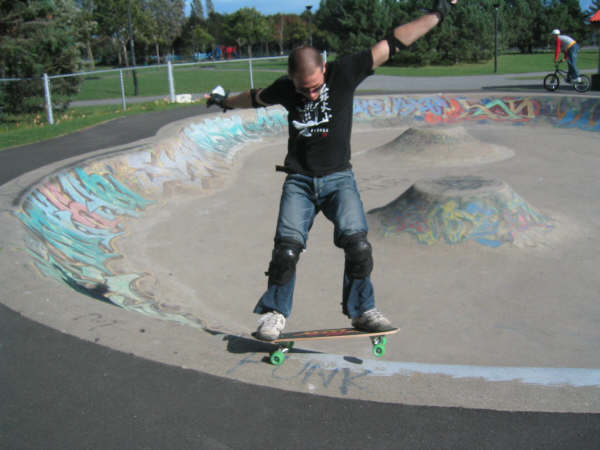
Dear Readers,
For the second consecutive year my abstract was selected to be part of the press book release of the prestigious SfN meeting which took place in San Diego (Nov. 3-7th). Here is a copy of the abstract that was released to the media:
Navigation Skills in the Early Blind Using a Tongue Stimulator.
D-R. Chebat, C. Rainville, K. Madsen, O. Paulson, M., Ptito
Univ. Montreal, Montreal, Canada.
Danish research center fo Magnetic Resonance, Hvidovre Hospital, Hvidovre, Denmark
Program Number: 737.24
Session Date-Time:Tuesday Nov., 6, 1:00 PM
WW17
Navigation is a complex behavior involving a multitude of sensory modalities. Vision is an integral component in navigation, providing the traveler with information about the configuration of proximal and distal space as well as updating motion cuess. The hippocampus has been shown to be involved in visual spatial memory in primates and humans. This brain structure comprises cells that respond to locations that are called place cells. Spatial navigation depends, in part, upon place celle actitivuty in teh hippocampus that plays a fundamental role in the interpretation of visual-based information. The hippocampus is subject to plastic changes humans. For example taxi drivers who have had an extensive visual navigational training show an enlarged right hippocampus whereas lesions to this same region impair retrieval and learning of spatial routes. Topographical memory relies on a network of brain regions involving the hippocampus, visual cortex, frontal lobes and parietal regions. Blind individuals from birth, however, are not impaired on a spatial competenmce level or in the formation of novel spatial maps of the environment when using tactile, proprioceptive or auditory cues. We recently showed, using a technique called Voxel-Based Morphometry (VBM) carried out on whole brain magnetic resonance imaging scans (MRI) that born blind people have a reduced right posterior hippocampus . The question therefore arisses on how blind people form spatial maps of their environment?
We first tested the ability of blind subjects to navigate in an obstacle course. Wearing a camera mounted on glasses and the tongue display unit (TDU) grid on the tongue, they were requested to point to the obstacle (detection), and move towards it and negotiate a path around it (avoidance). We shoed that blind subjects had no difficulty to peform teh task besides a structurally atrophied right posterior hippocampus (see 'Chebat et al., 2007a).
We proposed that they probably relied on other brain structures belonging to the neural network involved in topographical memory. We emphasied the use of neural pathways that connect teh parietal and frontal cortices to the occipital lobe because they are enlarged in the blind compared to the sighted. In a virtual maze task where subjects used their tongue to move along a virtual path while in a 3.0T fMRI scanner, we were able to show that route forming in the blind did not deoend upon the hippocampus but rather on cortical areas.
These results are of great interest since tehy show that the tongue is a useful organ to move around in the environment and to do so, it calls on a reorganization of brain connections that involve the frontal and parietal cortices. The applications of the TDU are therfore important since objects in the enviironment can be signaled to teh tongue in any non-vision situations lie darkness. Tests are currently on their way in deep sea divers wearing infra red goggles and tehir ability to use their tongue as a signal detector.

